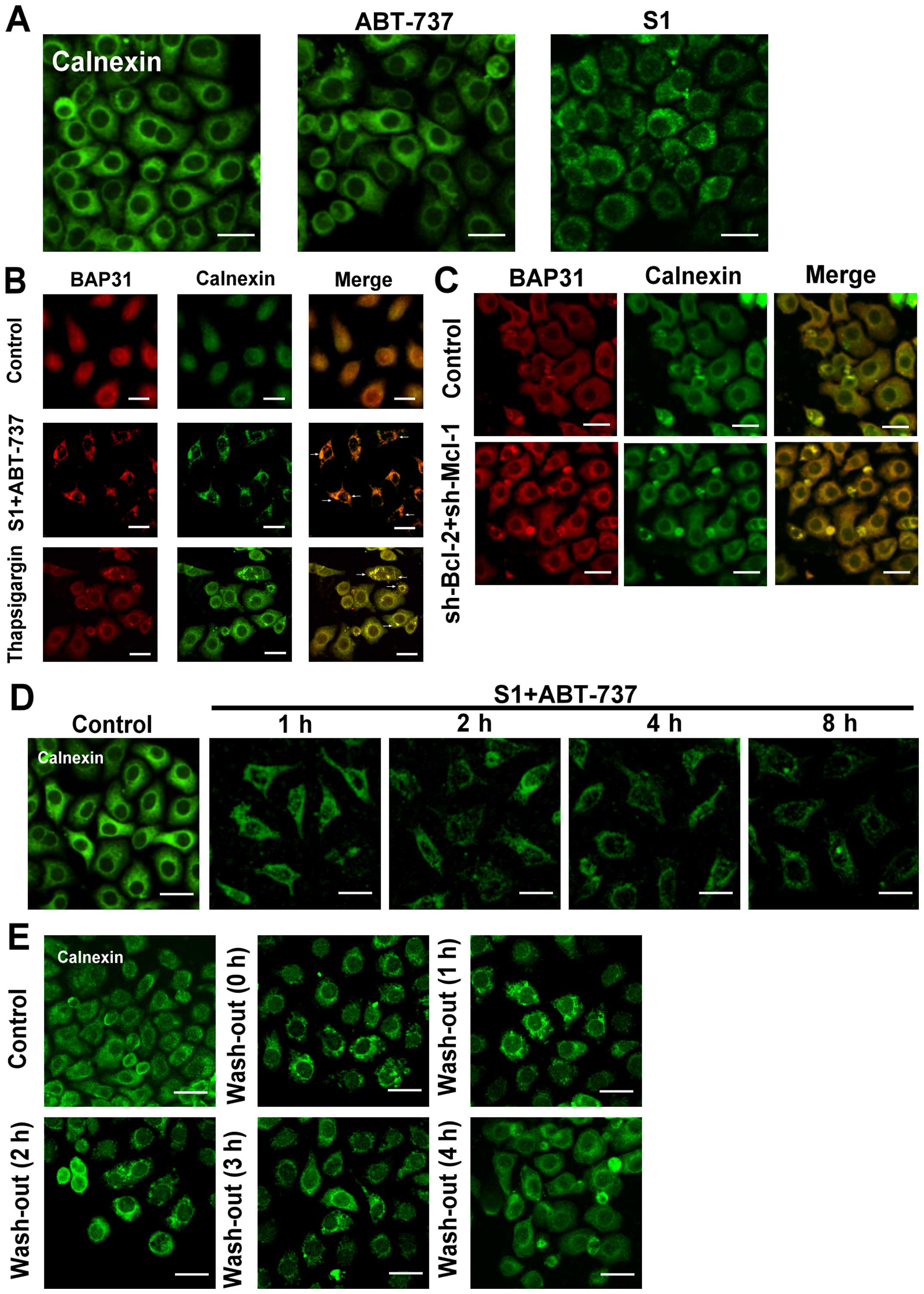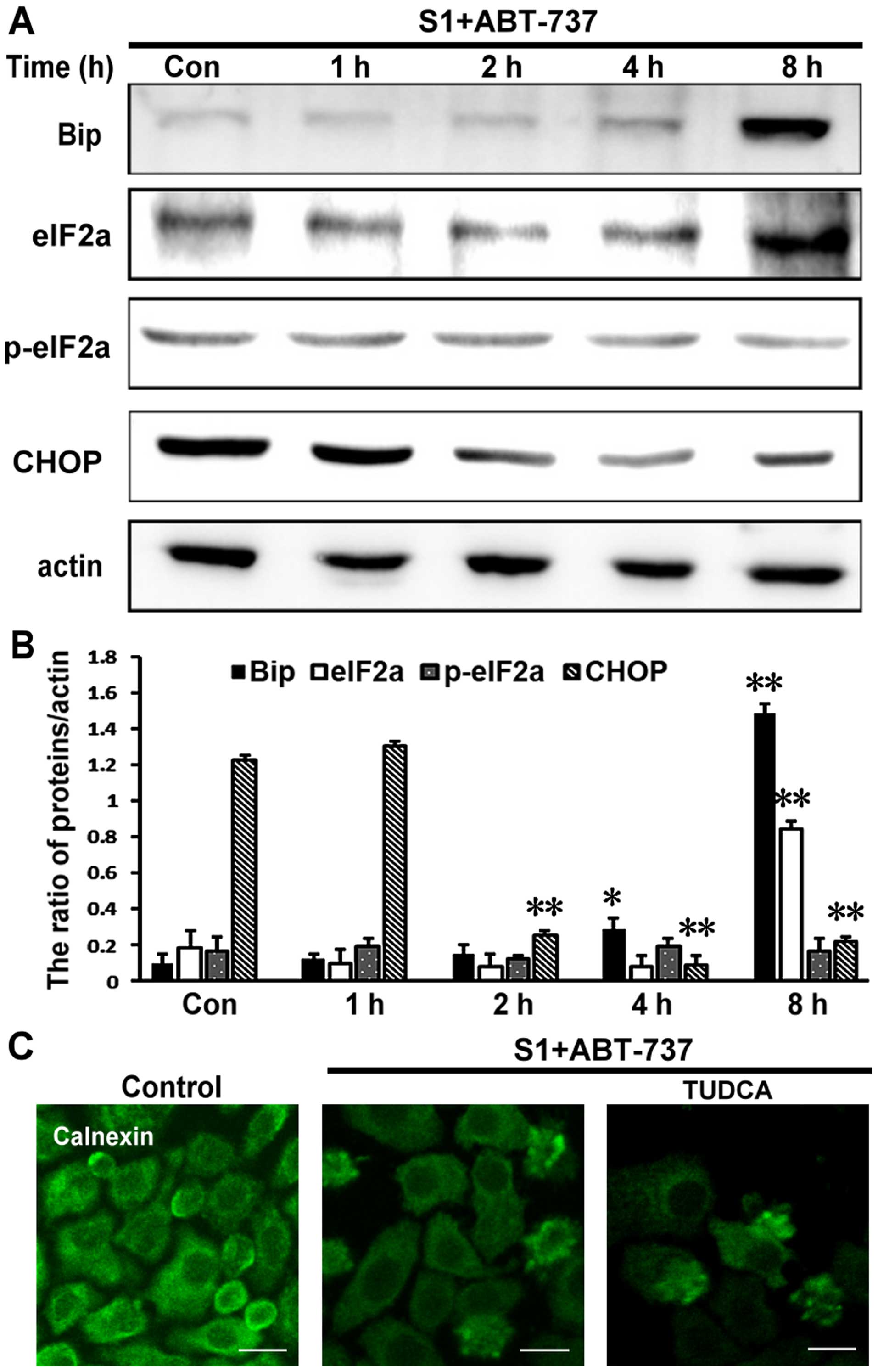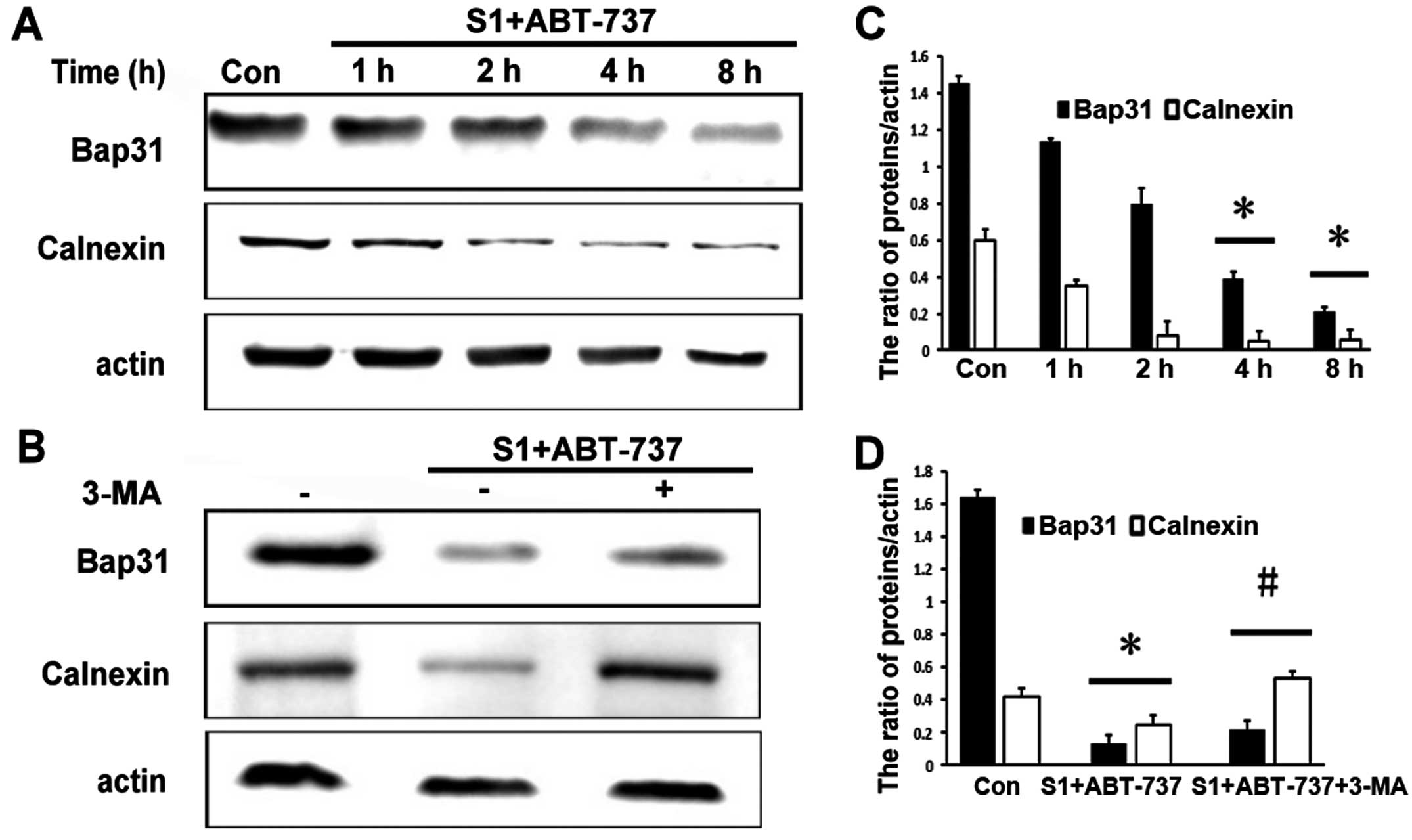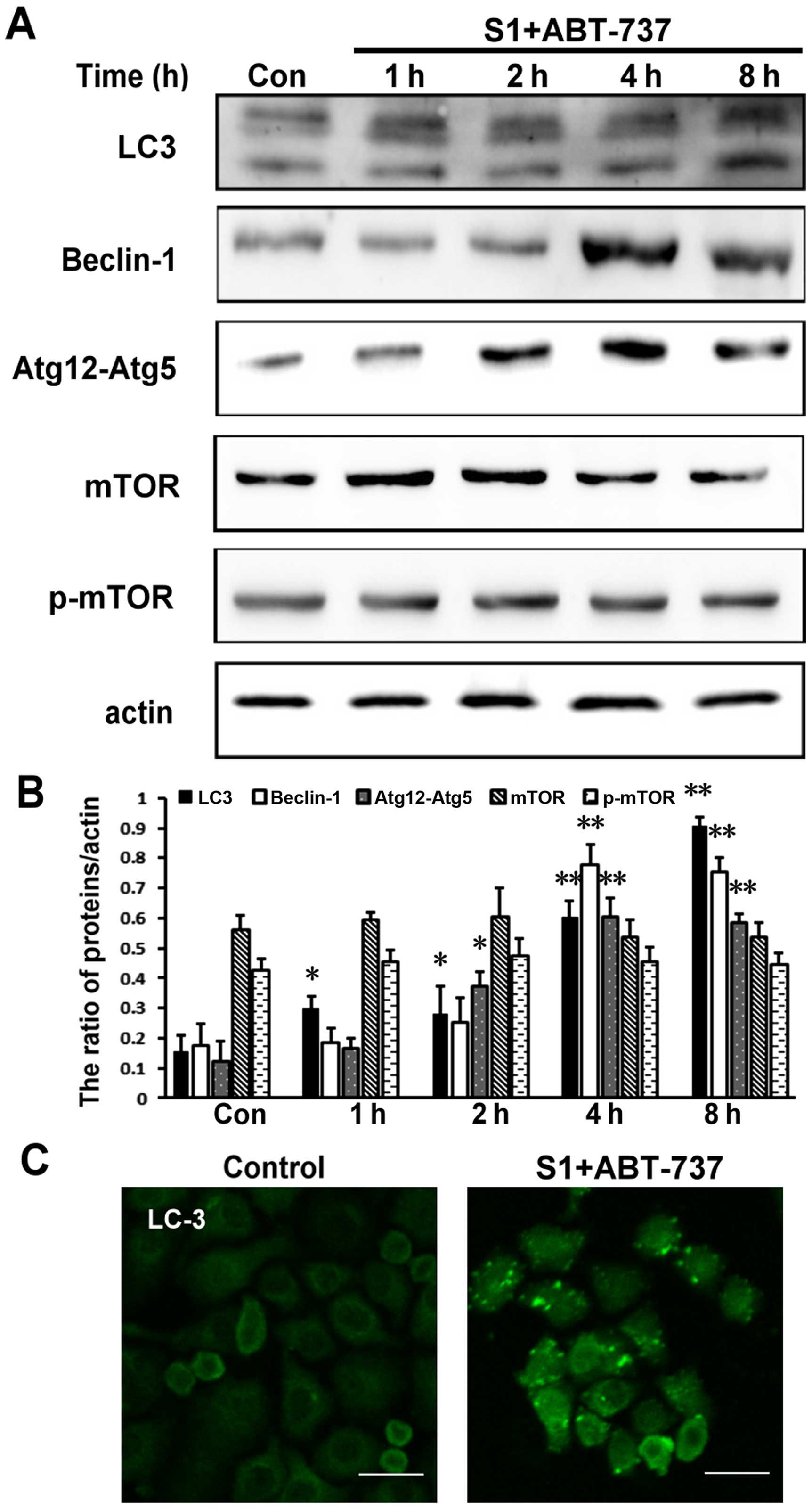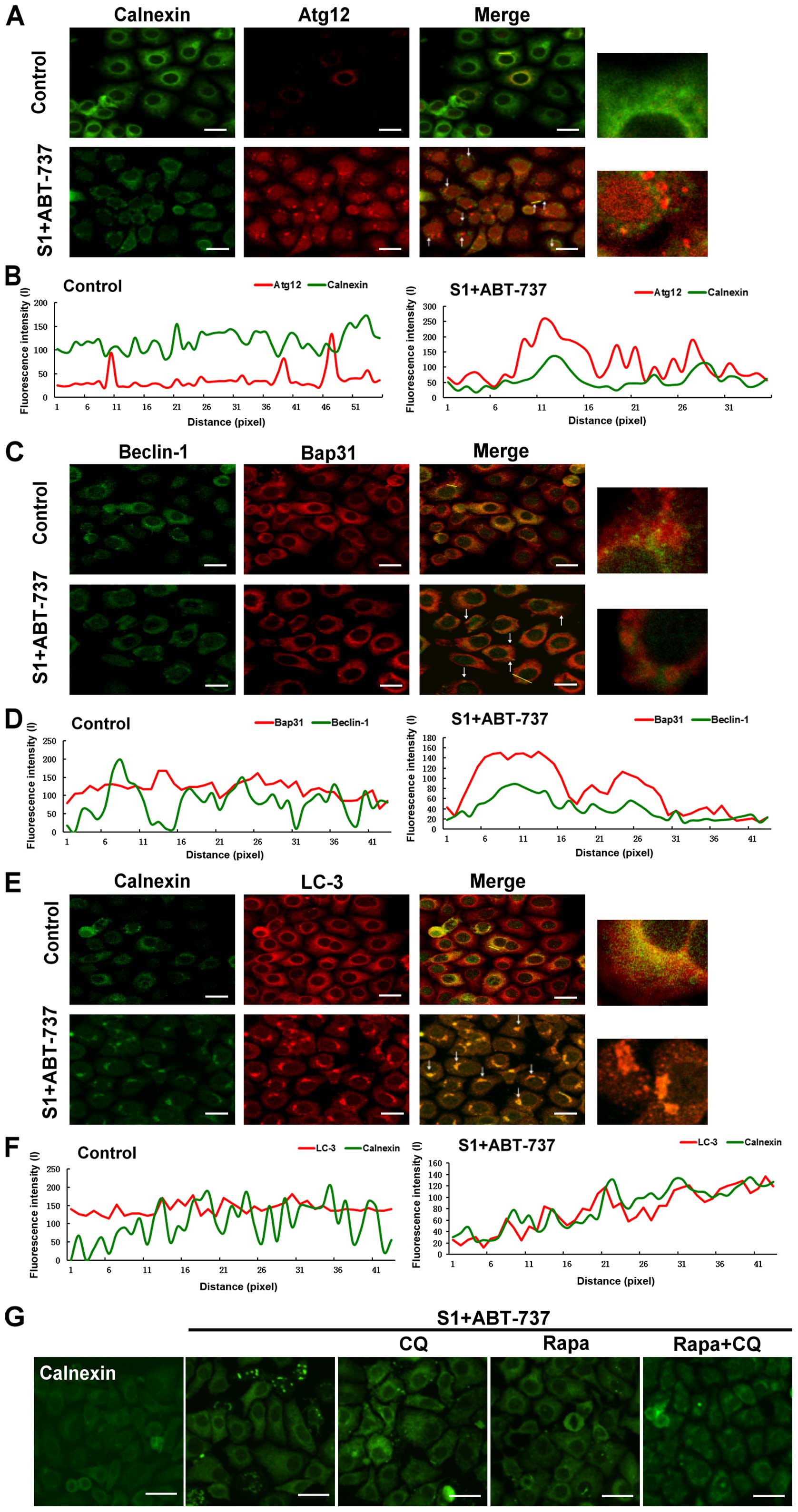|
1
|
Kim H, Bhattacharya A and Qi L:
Endoplasmic reticulum quality control in cancer: Friend or foe.
Semin Cancer Biol. 33:25–33. 2015. View Article : Google Scholar : PubMed/NCBI
|
|
2
|
Dicks N, Gutierrez K, Michalak M,
Bordignon V and Agellon LB: Endoplasmic reticulum stress, genome
damage, and cancer. Front Oncol. 5:112015. View Article : Google Scholar : PubMed/NCBI
|
|
3
|
Lin S, Sun S and Hu J: Molecular basis for
sculpting the endoplasmic reticulum membrane. Int J Biochem Cell
Biol. 44:1436–1443. 2012. View Article : Google Scholar : PubMed/NCBI
|
|
4
|
English AR and Voeltz GK: Endoplasmic
reticulum structure and interconnections with other organelles.
Cold Spring Harb Perspect Biol. 5:a0132272013. View Article : Google Scholar : PubMed/NCBI
|
|
5
|
Varadarajan S, Bampton ET, Smalley JL,
Tanaka K, Caves RE, Butterworth M, Wei J, Pellecchia M, Mitcheson
J, Gant TW, et al: A novel cellular stress response characterised
by a rapid reorganisation of membranes of the endoplasmic
reticulum. Cell Death Differ. 19:1896–1907. 2012. View Article : Google Scholar : PubMed/NCBI
|
|
6
|
Klee M and Pimentel-Muiños FX: Bcl-X(L)
specifically activates Bak to induce swelling and restructuring of
the endoplasmic reticulum. J Cell Biol. 168:723–734. 2005.
View Article : Google Scholar : PubMed/NCBI
|
|
7
|
Nakajima K, Hirose H, Taniguchi M,
Kurashina H, Arasaki K, Nagahama M, Tani K, Yamamoto A and Tagaya
M: Involvement of BNIP1 in apoptosis and endoplasmic reticulum
membrane fusion. EMBO J. 23:3216–3226. 2004. View Article : Google Scholar : PubMed/NCBI
|
|
8
|
Zhong JT, Xu Y, Yi HW, Su J, Yu HM, Xiang
XY, Li XN, Zhang ZC and Sun LK: The BH3 mimetic S1 induces
autophagy through ER stress and disruption of Bcl-2/Beclin 1
interaction in human glioma U251 cells. Cancer Lett. 323:180–187.
2012. View Article : Google Scholar : PubMed/NCBI
|
|
9
|
Malik SA, Shen S, Mariño G, BenYounès A,
Maiuri MC and Kroemer G: BH3 mimetics reveal the network properties
of autophagy-regulatory signaling cascades. Autophagy. 7:914–916.
2011. View Article : Google Scholar : PubMed/NCBI
|
|
10
|
Rubinsztein DC, Gestwicki JE, Murphy LO
and Klionsky DJ: Potential therapeutic applications of autophagy.
Nat Rev Drug Discov. 6:304–312. 2007. View
Article : Google Scholar : PubMed/NCBI
|
|
11
|
Quinsay MN, Thomas RL, Lee Y and
Gustafsson AB: Bnip3-mediated mitochondrial autophagy is
independent of the mitochondrial permeability transition pore.
Autophagy. 6:855–862. 2010. View Article : Google Scholar : PubMed/NCBI
|
|
12
|
Naydenov NG, Harris G, Morales V and
Ivanov AI: Loss of a membrane trafficking protein αSNAP induces
non-canonical autophagy in human epithelia. Cell Cycle.
11:4613–4625. 2012. View
Article : Google Scholar : PubMed/NCBI
|
|
13
|
Zhang B, Xie C, Zhong J, Chen H, Zhang H
and Wang X: A549 cell proliferation inhibited by RNAi mediated
silencing of the Nrf2 gene. Biomed Mater Eng. 24:3905–3916.
2014.PubMed/NCBI
|
|
14
|
Heath-Engel HM, Chang NC and Shore GC: The
endoplasmic reticulum in apoptosis and autophagy: Role of the BCL-2
protein family. Oncogene. 27:6419–6433. 2008. View Article : Google Scholar : PubMed/NCBI
|
|
15
|
Long MJ, Gollapalli DR and Hedstrom L:
Inhibitor mediated protein degradation. Chem Biol. 19:629–637.
2012. View Article : Google Scholar : PubMed/NCBI
|
|
16
|
Maejima Y, Kyoi S, Zhai P, Liu T, Li H,
Ivessa A, Sciarretta S, Del Re DP, Zablocki DK, Hsu CP, et al: Mst1
inhibits autophagy by promoting the interaction between Beclin1 and
Bcl-2. Nat Med. 19:1478–1488. 2013. View
Article : Google Scholar : PubMed/NCBI
|
|
17
|
Hanna RA, Quinsay MN, Orogo AM, Giang K,
Rikka S and Gustafsson AB: Microtubule-associated protein 1 light
chain 3 (LC3) interacts with Bnip3 protein to selectively remove
endoplasmic reticulum and mitochondria via autophagy. J Biol Chem.
287:19094–19104. 2012. View Article : Google Scholar : PubMed/NCBI
|
|
18
|
Tooze SA, Jefferies HB, Kalie E, Longatti
A, McAlpine FE, McKnight NC, Orsi A, Polson HE, Razi M, Robinson
DJ, et al: Trafficking and signaling in mammalian autophagy. IUBMB
Life. 62:503–508. 2010. View
Article : Google Scholar : PubMed/NCBI
|
|
19
|
Yang Z and Klionsky DJ: Mammalian
autophagy: Core molecular machinery and signaling regulation. Curr
Opin Cell Biol. 22:124–131. 2010. View Article : Google Scholar : PubMed/NCBI
|
|
20
|
Paglin S, Lee NY, Nakar C, Fitzgerald M,
Plotkin J, Deuel B, Hackett N, McMahill M, Sphicas E, Lampen N, et
al: Rapamycin-sensitive pathway regulates mitochondrial membrane
potential, autophagy, and survival in irradiated MCF-7 cells.
Cancer Res. 65:11061–11070. 2005. View Article : Google Scholar : PubMed/NCBI
|
|
21
|
Takeuchi H, Kondo Y, Fujiwara K, Kanzawa
T, Aoki H, Mills GB and Kondo S: Synergistic augmentation of
rapamycin-induced autophagy in malignant glioma cells by
phosphatidylinositol 3-kinase/protein kinase B inhibitors. Cancer
Res. 65:3336–3346. 2005.PubMed/NCBI
|
|
22
|
Wang X, Olberding KE, White C and Li C:
Bcl-2 proteins regulate ER membrane permeability to luminal
proteins during ER stress-induced apoptosis. Cell Death Differ.
18:38–47. 2011. View Article : Google Scholar : PubMed/NCBI
|
|
23
|
Hetz C, Bernasconi P, Fisher J, Lee AH,
Bassik MC, Antonsson B, Brandt GS, Iwakoshi NN, Schinzel A,
Glimcher LH, et al: Proapoptotic BAX and BAK modulate the unfolded
protein response by a direct interaction with IRE1alpha. Science.
312:572–576. 2006. View Article : Google Scholar : PubMed/NCBI
|
|
24
|
Liu N, Xu Y, Sun JT, Su J, Xiang XY, Yi
HW, Zhang ZC and Sun LK: The BH3 mimetic S1 induces endoplasmic
reticulum stress-associated apoptosis in cisplatin-resistant human
ovarian cancer cells although it activates autophagy. Oncol Rep.
30:2677–2684. 2013.PubMed/NCBI
|
|
25
|
Schuck S, Gallagher CM and Walter P:
ER-phagy mediates selective degradation of endoplasmic reticulum
independently of the core autophagy machinery. J Cell Sci.
127:4078–4088. 2014. View Article : Google Scholar : PubMed/NCBI
|
|
26
|
Hayashi-Nishino M, Fujita N, Noda T,
Yamaguchi A, Yoshimori T and Yamamoto A: A subdomain of the
endoplasmic reticulum forms a cradle for autophagosome formation.
Nat Cell Biol. 11:1433–1437. 2009. View
Article : Google Scholar : PubMed/NCBI
|



